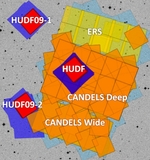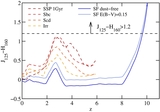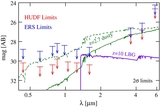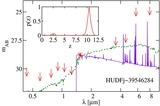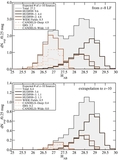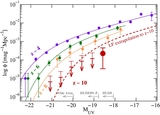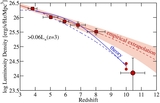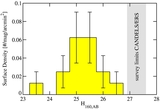Image Details
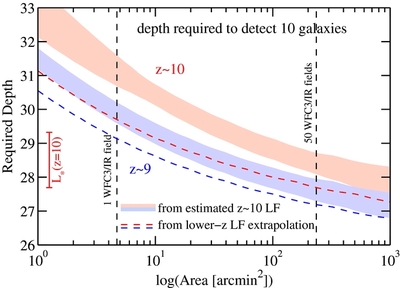
Caption: Figure 9.
Depth required to detect ten z ~ 9 galaxies (blue shaded region and dashed line) and ten z ~ 10 galaxies (red shaded region and dashed line) as a function of survey area. These regions show the expected number of sources calculated using our LF extrapolations to z ~ 10 from Section 4.3, i.e., assuming only evolution in M * or only in ϕ * to reproduce the detection of our one z ~ 10 candidate. The dashed lines show the same, but assuming the standard lower redshift extrapolation of the UV LF (Bouwens et al. 2011b). In particular, at z ~ 10 the estimated depths differ significantly. The range of L *( z = 10) values of these extrapolations is indicated with an error bar in the lower left. As can be seen, surveys reaching significantly deeper than ~28 mag will be required to detect a significant population of z > 8 galaxies. The vertical dashed lines indicate the area of 1 and 50 WFC3/IR fields, respectively. A survey with only one pointing would need to reach to ~31 mag in H 160, AB to significantly constrain the z ~ 10 galaxy population, which is out of reach with HST WFC3/IR. Therefore, multiple fields are favorable for searching for z ~ 10 galaxies. Additionally, comparably deep optical data (>30 mag) and deep IRAC imaging would be required over such fields in order to robustly exclude low-redshift contaminants. The identification of z ~ 9 galaxies would benefit from imaging in different filters (e.g., F140W) than adopted in current deep WFC3/IR fields.
Copyright and Terms & Conditions
© 2012. The American Astronomical Society. All rights reserved.


